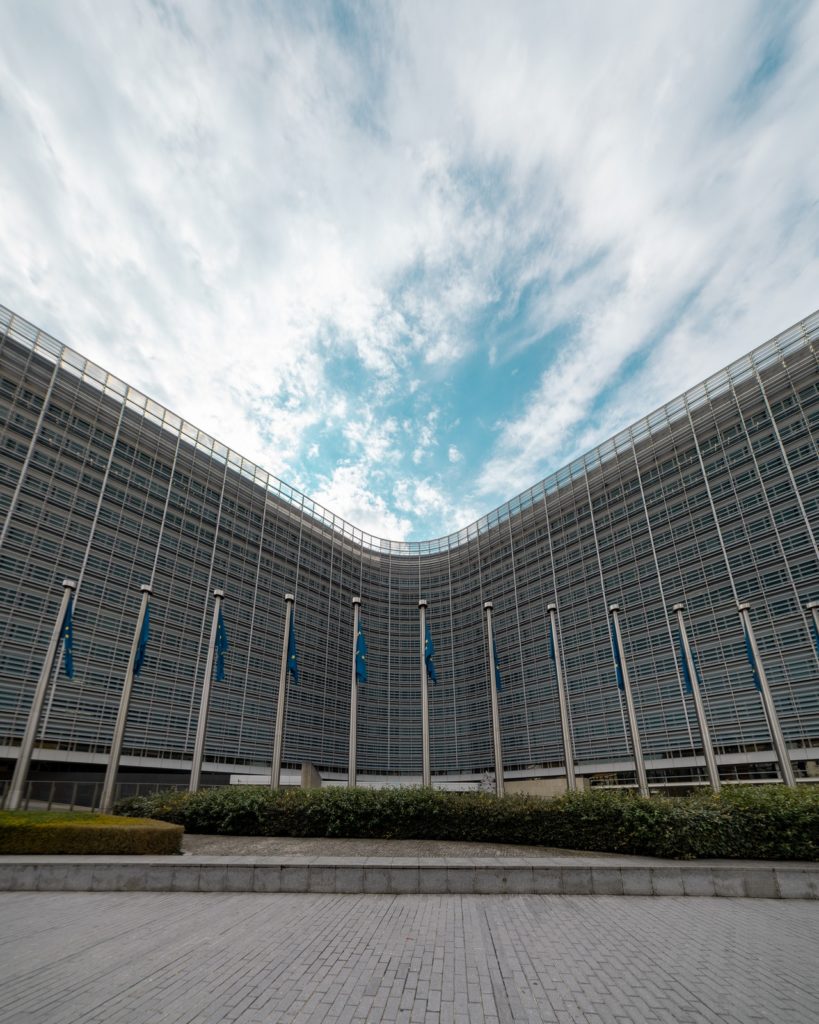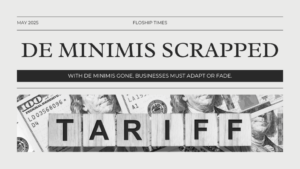With an aggregated population of 445 million driven by the pursuit of more choice and better prices, EU domestic fulfillment and ecommerce revenues are projected to reach €717bn at a yoy growth rate of 5.16% by 2021, of that cross border comprises 25.5%
Despite the promise of cross border ecommerce delivering more product variety and competitive prices, it has not been a seamless integration into the EU shopping culture. Taking a deep dive into ecommerce of tangible goods, https://joint-research-centre.ec.europa.eu/system/files/2016-05/JRC101030.pdf”a 2016 poll found 27% of EU respondents concerned about high delivery costs and 23% concerned about long delivery times.
Statistically, for ecommerce brands, this means money left on the table through higher cart abandonment rates and lower customer lifetime values.
WHY SHOULD I CONSIDER AN EU WAREHOUSE?
A common trend in the early lifecycle of an eCommerce business is to ship from one single location that fulfills its domestic market and eventually delivering to an international customer via cross-border shipping (for example, from Hong Kong). During its international expansion, several factors influence these eCommerce brands to consider employing a domestic warehouse in Europe, including:
- Adjust for EU’s VAT Reforms. Regulatory wise, from 1 Jul 2021, all ecommerce brands selling and importing into EU will need to file an IOSS for goods below €150 where the seller can charge VAT at the check out and avoid any import VAT since it has already been collected from customers at the point of sales. In order to declare the amount of VAT collected at the check out and below €150, you will need to file the VAT return on a monthly basis through the IOSS system. This setup will simplify the import process and to easily collect and pay VAT. What’s important to note here is you will need to appoint a fiscal representative to file the IOSS
- The high cost of shipping making it difficult to scale up. Especially when shipping low or medium value products, or heavy products, the cost of shipping can even equal the cost of the product itself.
- Unpredictable and long shipping times leading to inventory uncertainty. Airfreight is the primary freight mode for cross-border B2C e-commerce. However, cargo capacity remaining at around 70% less than the pre-pandemic period poses a significant challenge to cross-border e-commerce.
- Inconsistent and different duties and taxes for every EU state. Ecommerce brands have to make decisions between shipping DDP, affecting their profit-margins, versus shipping DAP (=DDU), affecting negatively their customer experience. The new EU regulations from the 1st of July will complicate this situation even more.
- Positive environmental impact through domestic fulfillment . Indeed, combining ocean freight to domestic warehouse and then last-mile trucking creates a lower carbon footprint than air freight shipping from the other side of the world.
WHERE SHOULD I SET MY EU WAREHOUSE?
Now, you might be wondering, which EU state should I set up my warehouse? Although there is no right or wrong option, we recommend taking the following factors into consideration :
- Duties and taxes in the country
- Cost of living in the country (hence wages)
- Warehouse’s proximity to carriers’ hubs
- Your top selling countries
- The total CBMs you want to store
It is important to remember that this choice varies depending on your eCommerce’s business model. For full disclosure, at Floship, we made the strategic decision to service EU clients through our warehouse fulfillment facilities in Kaunas, Lithuania for 4 reasons
- Most economical warehousing rates for storage, pick and pack and value added services in Europe whilst maintaining EU quality standards (it is SQAS assessed & ISO 9001 certified)
- 20,000+ sq ft of warehouse storage space, accommodating for high inbound inventory volumes
- Located in the Kaunas International Airport’s transportation hub. Higher pick up frequencies and faster transit times with a reduction of time between the goods being picked and packed and shipped all across Europe. I
- Lithuania’s 21% VAT rate.
HOW DOES DOMESTIC EU DOMESTIC FULFILLMENT IMPROVE MY SUPPLY CHAIN?
The supply chain I recommend would feature longer but cheaper transportations methods and a more predictable supply chain from the manufacturer to your end consumer.
Ecommerce brands should seek to locate their inventory closer to the final EU destination to reduce uncertainties, especially in the face of global disruptions such as COVID-19. As such, this transitions their supply chain to a B2B2C model, where there is a pre-stocking of goods in a bonded warehouse in the destination country and then using local delivery services for the last-mile distribution.
The long run impact of this process is to reduce the dependency on air freight in cross-border e-commerce and consequentially, benefit the lower-cost (and more carbon friendly) shipping mode such as ocean freight and rail freight, for the first-mile transportation.
Taking Floship’s Lithuania warehouse as an example. Your ecommerce inventory would either be air or ocean freighted to be custom cleared Lithuania. Taxes would be paid on the declared value (21% in Lithuania) and the appropriate duties will be paid (Feel free to contact me if you want to find out more). You will need to either have a company and VAT number registered in the EU or to work with a partner like Floship who can act as the IOR (Importer of Record) for you. The goods will then have entered the EU, stored in this new warehouse, and authorized to be traded within the EU countries. The added advantage of using Floship is our tech portal which supports multi-warehouse inventory, giving you aggregated real time management of your inventory from all warehouses you have inventory stock in.
It is important to note that the model of having multiple warehouses is especially advantageous for companies with significant ecommerce orders in the EU. Indeed, there will be upfront costs like bulk shipping, duties and taxes, and receiving costs, that will require the company to have enough cash flow. On the other hand, this model will save costs on the long-term, increase inventory certainty and offer a more sustainable platform to drive ecommerce growth.
WHAT ARE THE KEY BENEFITS TO MY ECOMMERCE BUSINESS?
The impact will highly vary depending on the nature of your eCommerce store. Nonetheless, the outcome is always likely to be:
- Reduce warehousing costs – if selecting a warehouse in a country with competitive costs.
- Reduce the cost of shipping – by having your warehouse located nearer to your customers.
- Reduce shipping times
- Minimize duties and taxes paid – by paying taxes on your bulk shipments
The eCommerce industry is currently facing various changes in Europe. Brexit is affecting UK eCommerce businesses selling into Europe negatively because of the increase of prices and uncertainty of shipping. In addition, the new EU regulations from the 1st of July and the removal of the thresholds will affect eCommerce businesses selling into Europe from abroad.
It is likely that getting an EU-based warehouse will become a growth driver for global online companies in the following months, and selecting the most reliable partner being a key factor for satisfied and loyal customers.

Ready To Upgrade Your Logistic Solution?
Speak to Floship ecommerce logistic consultant about improving your global support chain today





